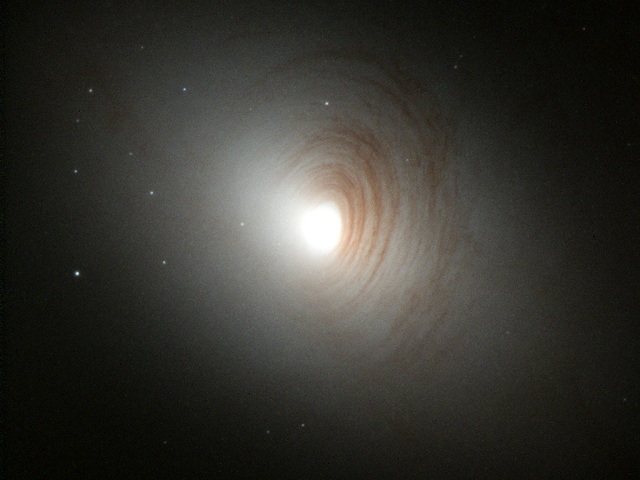By Annelies Rhemrev
October 28, 2012
NGC 2787, a lenticular galaxy in Ursa Major
Image Credit: M. Carollo (Swiss Federal Institute of Technology, Zurich), NASA and The Hubble Heritage Team (STScI/AURA)
Click here for a larger image.
NGC 2787 is a barred lenticular galaxy of about 4500 light-years across, located approximately 24 million light-years away in the constellation Ursa Major. It is moving away from us at about 696 kilometers per second.
Lenticular galaxies are lens-shaped galaxies and, like spiral galaxies, they contain a disk, but like elliptical galaxies, they are usually short on dust and gas. They show little or no evidence of the grand spiral arms that occur in their more photogenic cousins. Lenticulars are relatively little studied, possibly because of their seemingly benign nature.
However, despite NGC 2787’s seemingly bland qualities astronomers did take a look at the center of this galaxy in order to understand what happens in the center and to help determine how lenticular galaxies formed, including the role of galaxy collisions and central black holes.
Pictures and evidence indicate that lenticulars can be both photogenic and scientifically interesting after all. For example, the above image of NGC 2787. Although the galaxy has no appreciable spiral structure or ongoing star formation, this image shows that the center of this lenticular galaxy does have an interesting structure. It contains a faint bar (not apparent in this image) and a bright nucleus, encircled with tightly wound, almost concentric, arms of dark dust.
Measurements of the speed of gas quite near the center of the galaxy show that it is accelerated to high speed, probably by a supermassive black hole that is quietly consuming small amounts of matter. Astronomers study this black hole to learn more about the relationship between supermassive black holes and their parent galaxies. NGC 2787 may be in the latest stages of an ultra-luminous infrared galaxy (ULIRG).
There are about a dozen globular clusters hovering around NGC 2787 visible in this image. What appear to be stars are, in fact, gravitationally bound families of hundreds of thousands of ancient stars orbiting the center of the galaxy.
This image was made with the Hubble Space Telescope using Hubble’s Wide Field Planetary Camera 2 in January 1999, by combining light from blue, green and infrared filters.
See more images on Anne’s Astronomy News



